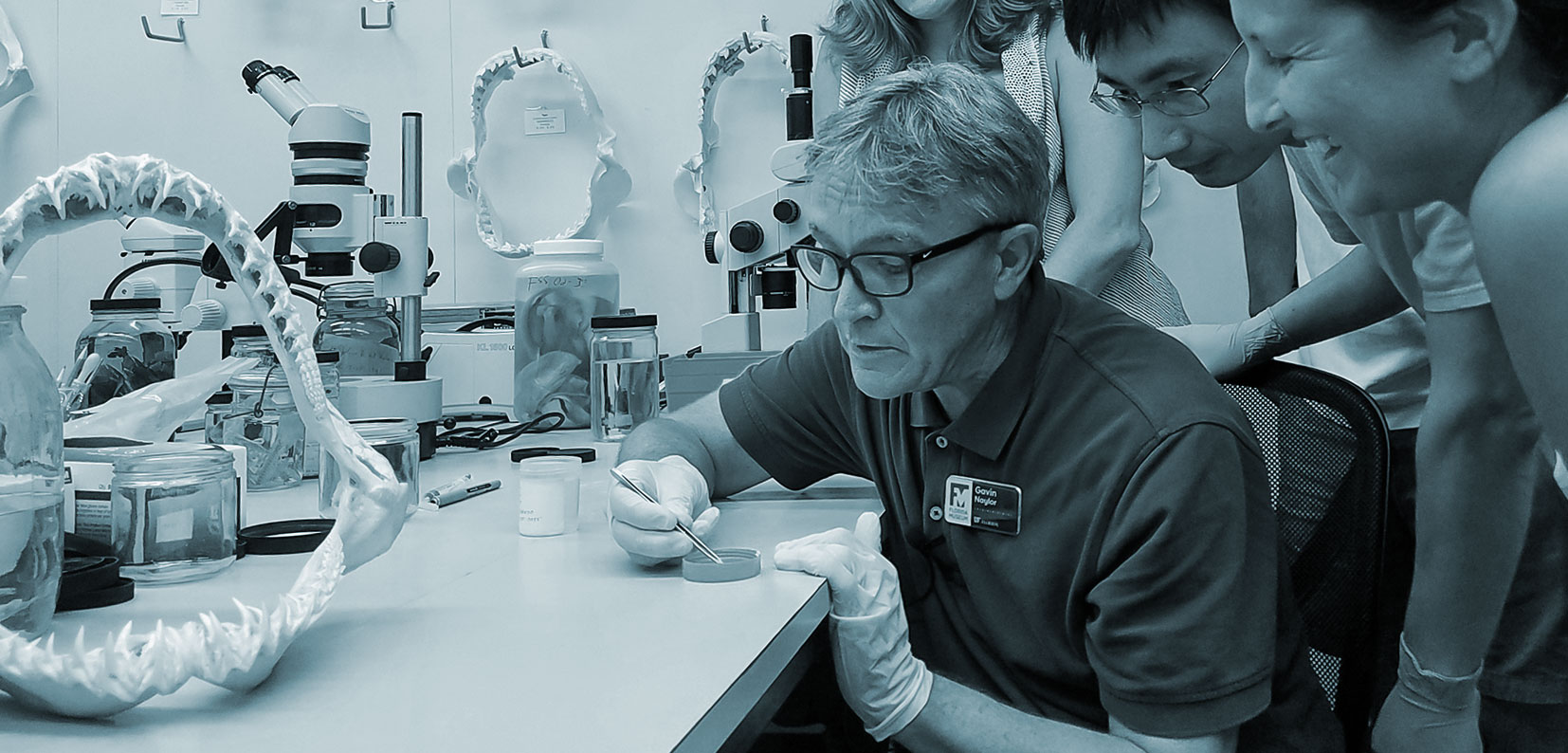Coastal Job: Shark Attack Researcher
Gavin Naylor investigates and collates information about shark bites around the world.
Article body copy
Some people work in cubicles, others work in kitchens, but the most intriguing workplace of all may be the coast. Meet the people who head to the ocean instead of the office in our Coastal Jobs series.
With the help of scientists in Brazil, South Africa, Australia, Réunion island off the coast of Madagascar, and New Caledonia in the South Pacific, Gavin Naylor uses news stories, victim questionnaires, autopsy reports, and photographs, to investigate shark bites, keeping the Florida Museum’s International Shark Attack File current.
Ours is not the only shark bite file, but with 6,800 records, it is the most comprehensive. Our team—researchers and students here at the museum, as well as scientist collaborators—mostly relies on media reports to learn about attacks, although we have a good network of lifeguards and other beach safety folks—mostly in the United States and Australia—who routinely contact us when there’s been an incident. We try to interview the victim in person and use a questionnaire to ask for details: What were you wearing? How deep was the water? Was anyone fishing nearby? We also ask the victim for a narrative so we can get their sense of the sequence of events. Each January, the Florida Museum releases a summary of bites.
The impetus for the file dates back to the Second World War. In 1945, Japanese torpedoes hit the USS Indianapolis as it was cruising toward the Philippines, sending about 800 sailors into the water, where several dozen, and possibly as many as 100, were eaten by sharks. The sharks were most likely oceanic whitetips, one of the few species known to be aggressive toward humans. Sailors were as frightened of sharks as they were of being torpedoed. And so, the US Navy started funding research for potential shark repellents such as pardaxin, a substance a fish in the Red Sea called the Moses sole emits, which seems to protect it from sharks. Eventually, scientists realized they needed to better understand what situations cause sharks to bite humans—and the file was born.
In 2019, a guy who’d been bitten 25 years earlier reached out to us; a tiny sliver of the shark’s tooth had worked its way out of his ankle. I gave it to my lab manager; he was dubious that he’d be able to get enough DNA from it to identify the shark, but, surprisingly, he did. It was from a blacktip shark from the population near New Smyrna Beach in Florida, which is exactly where this guy was surfing when he was bitten.
One year, we investigated bites on two people who were swimming long distance between the Hawaiian Islands. Turns out, the culprits were little animals called cookiecutter sharks. They have bony tongues and ginormous muscles on the bottom of their mouths; they latch on to their victims and drop that bony tongue to make an incredible negative pressure, then they slurp up a two-inch [five-centimeter] circular piece of tissue.
My absolute favorite shark—which has never bitten a human—is known in some circles as the flaming a–hole shark [Euprotomicroides zantedeschia]. It’s only about six inches [15 centimeters] long and lives 5,000 meters below the surface. The shark has a pocket near its anus that produces luminescent clouds of fluid; we believe that when it’s pursued by other fishes, it releases distracting fireworks of brightness.
People tend to think databases like the shark file aren’t worth the effort—until they need to know something, such as if shark bites on people are increasing or decreasing, or whether shark bite data can show if climate change is affecting how sharks move around the ocean.
My hope is that we lure the public in with the data, but that they stay for the natural history. People will visit our website to find out which species was responsible for an attack, how often this species attacks, and if such attacks occur in the same area. Once they start clicking, they’re often keen to learn more. For instance, we have an interactive map where visitors can explore bite distribution by species over time. They can then click on links and learn things such as that great white sharks are warm blooded, or that tiger sharks can grow as long as a Cadillac. I hope they’re so mesmerized that they forget that these animals occasionally bite people.

